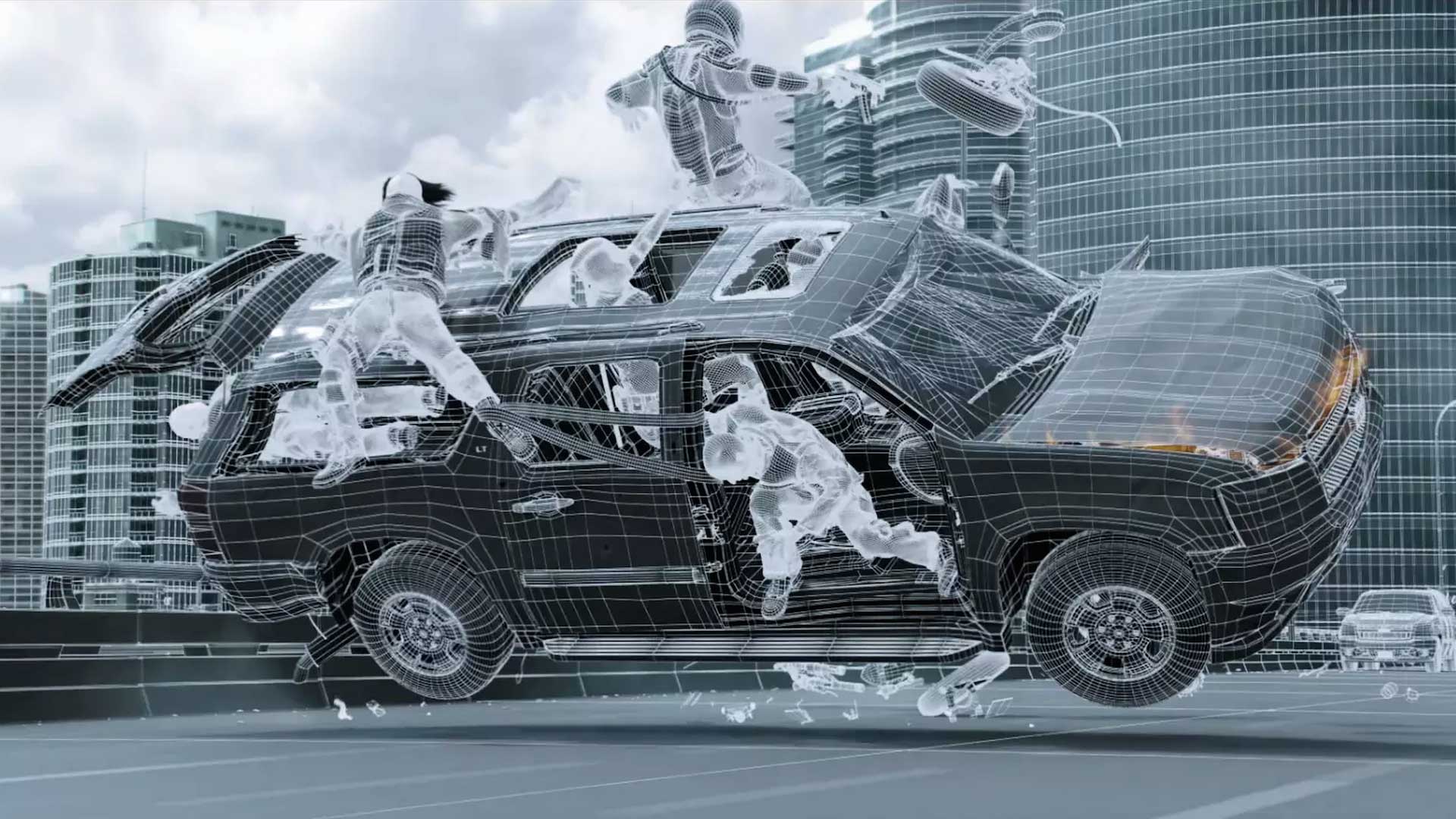

The suits at 20th Century Fox gave producers $58 million to make Deadpool. Compare that to the $135 million doled out for The Revenant, or the $108 million for The Martian. And, yet, Deadpool has outgrossed every other film 20th Century has released so far this year, domestically and globally, pulling in more than $730 million. There are several reasons for that, but chief among them is the opening sequence, a vehicular pandemonium that solidifies our first impression of the Merc with the Mouth and his R-rated charge onto the big screen. Visual effects (VFX) company Atomic Fiction created that glorious “Freeway Chase” sequence, as well as the one that follows, “Deadpool Counts Bullets.” And the people responsible have given us a crackerjack look at what went into the effort.
One of those people is Atomic co-founder Ryan Tudhope. He says that the interiors were done on a green screen stage during principle photography, and that the exteriors were all digital. To improve the appearance of reality, Miller and his team built giant LED panels that played footage inside the green screen studio, helping the VFX team build realistic reflections and lighting.
In a lengthy interview with Art of VFX, Tudhope explains how a team of 130 people spent nine months capturing footage from an Northern California’s US 101, Vancouver’s Georgia Viaduct, and an empty Detroit highway to create the roads and backgrounds. Then, they digitally recreated it and started filling in the multitudinous details that’d make it look real. Authentic traffic patterns. Trash. Dust. Water splashes. Sparks. They even designed the computerized VFX images with movements at a higher frame rate, making them appear like genuine footage does when played in slow motion. The kicker? Seven million “core hours” rendering the footage, all done via ConductorIO platform in the Google Cloud.
Tudhope claims the small budget actually helped; the Atomic team “had just enough resources to do great work, not enough that we could be irresponsible” so that “every decision mattered.” The movie’s prospects were certainly helped by the fact that director Tim Miller owns VFX company Blur. (That firm’s responsible for some of the most amazing video game work in the industry, including the Star Wars Knights of the Fallen Empire cinematic trailer, which is easily a billion times better than Star Wars VII: The Force Awakens.)
If you have any interest in VFX, Tudhope’s in-depth explanation is a worthy read, as are the words from overall VFX supervisor Jonathan Rothbart. Most magic tricks are lame once they’re revealed. But, when it comes to wild car chase scenes, seeing how the sausage gets made only makes it all the more tasty.
